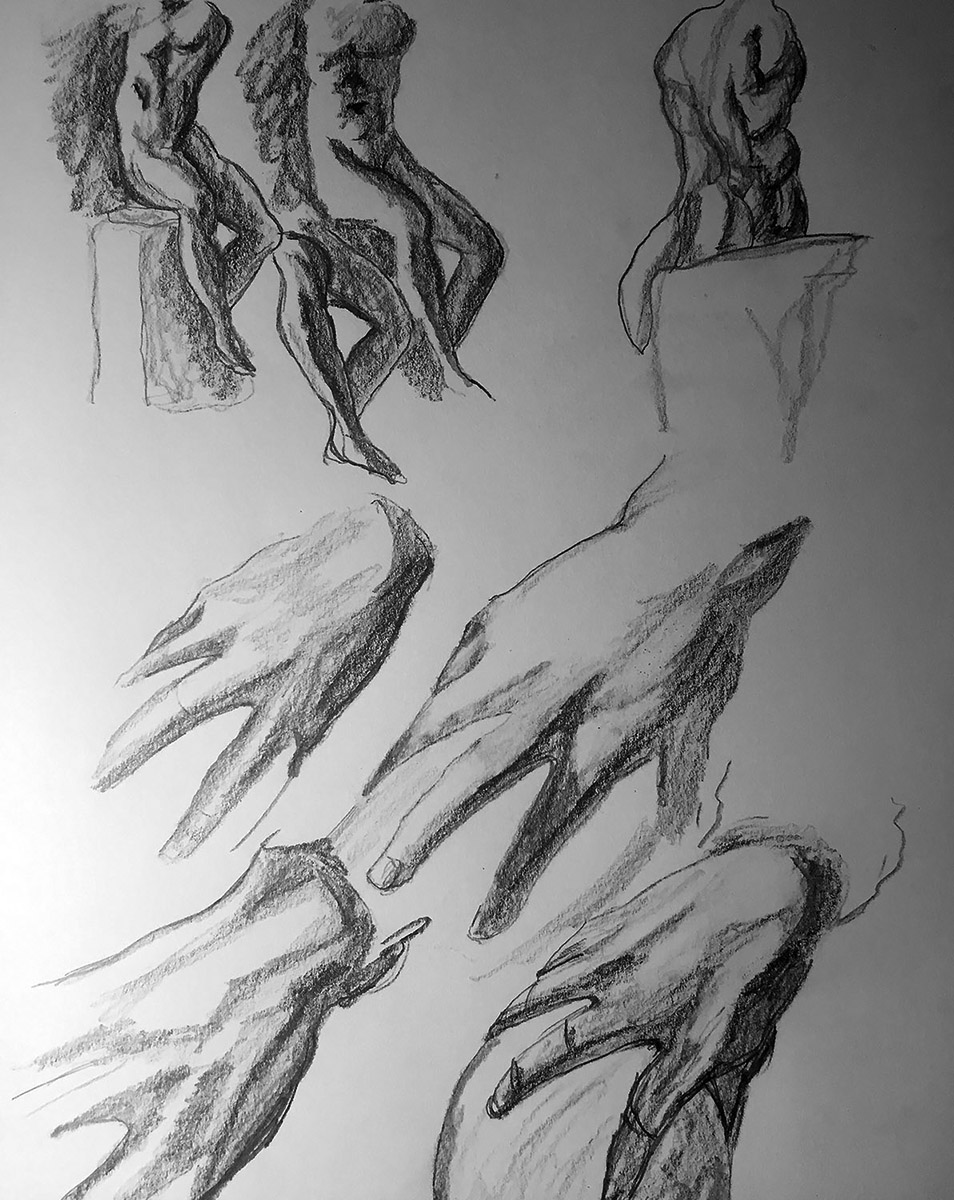
This blog post is for a drawing of hands and nude figures that was done in graphite pencil and copied from a pen and ink drawing by Bartolomeo Passarotti. The original by Passarotti is in the Ashmolean Museum at Oxford. Unfortunately, you can’t find an image of the drawing on the Ashmolean website. I think if we all get together and call the Ashmolean Museum website and tell them to display the drawing online they will probably still not do it. Or maybe I could start a petition that various people can sign and then we can accomplish nothing that way. An image of the original appears in the book ‘Anatomy Lessons of The Great Masters’ by Robert Hale. Most of the old master copies on this blog were done from that book. It’s something I did during the Covid pandemic. I’m just getting around to posting the drawings online. Well enough chit-chat, let’s learn more about the master artist Bartolomeo Passarotti.
Bartolomeo Passarotti was an Italian Mannerist painter renowned for his contributions to the Bolognese School of Painting during the late Renaissance. Passarotti’s super duper artistic career prospered under the fancy schooling of the renowned painter Prospero Fontana. (FYI: ‘Prospero’ means ‘prosperous’ in Italian) Bartolomeo Passarotti created a unique style distinguished by its naturalism, energetic colors, and painstaking attention to detail. Passarotti excelled in portraiture, depicting his subjects with sharp observation which included their individual characteristics and expressions. Sometimes he would also incorporate a touch of wit and satire into his works. While portraiture was his main gig, Passarotti also displayed his versatility through various genres, including religious, historical, and mythological themes.
I’m just getting around to posting the drawings online.
In addition to his super fantastic skill, Passarotti was a dedicated teacher and art theorist. He created a drawing academy in Bologna, where he taught a whole lot of aspiring artists, including celebrated artist Ludovico Carracci. Passarotti even wrote a treatise called, “On Painting and on the Excellences of the Perfect Painter.” I looked for it online but couldn’t find it. I have a feeling the Ashmolean Museum staff doesn’t know either.
Passarotti’s impact spread throughout Italy and his contributions to the Bolognese School played an important role in the development of the Baroque style and the subsequent rise of the Carracci family as leading figures in Italian art.
While Bartolomeo Passarotti’s name may not be as widely recognized as some of his contemporaries, his impact on the art world is undeniable. He died in 1592, one hundred years after 1492 when Christopher Colombus sailed the ocean blue.
